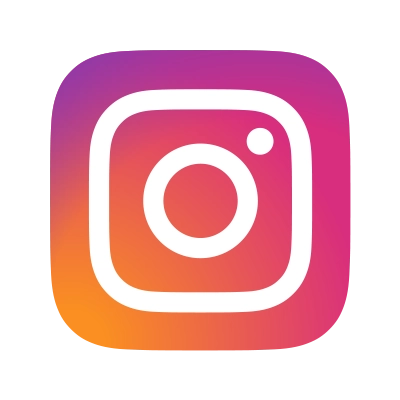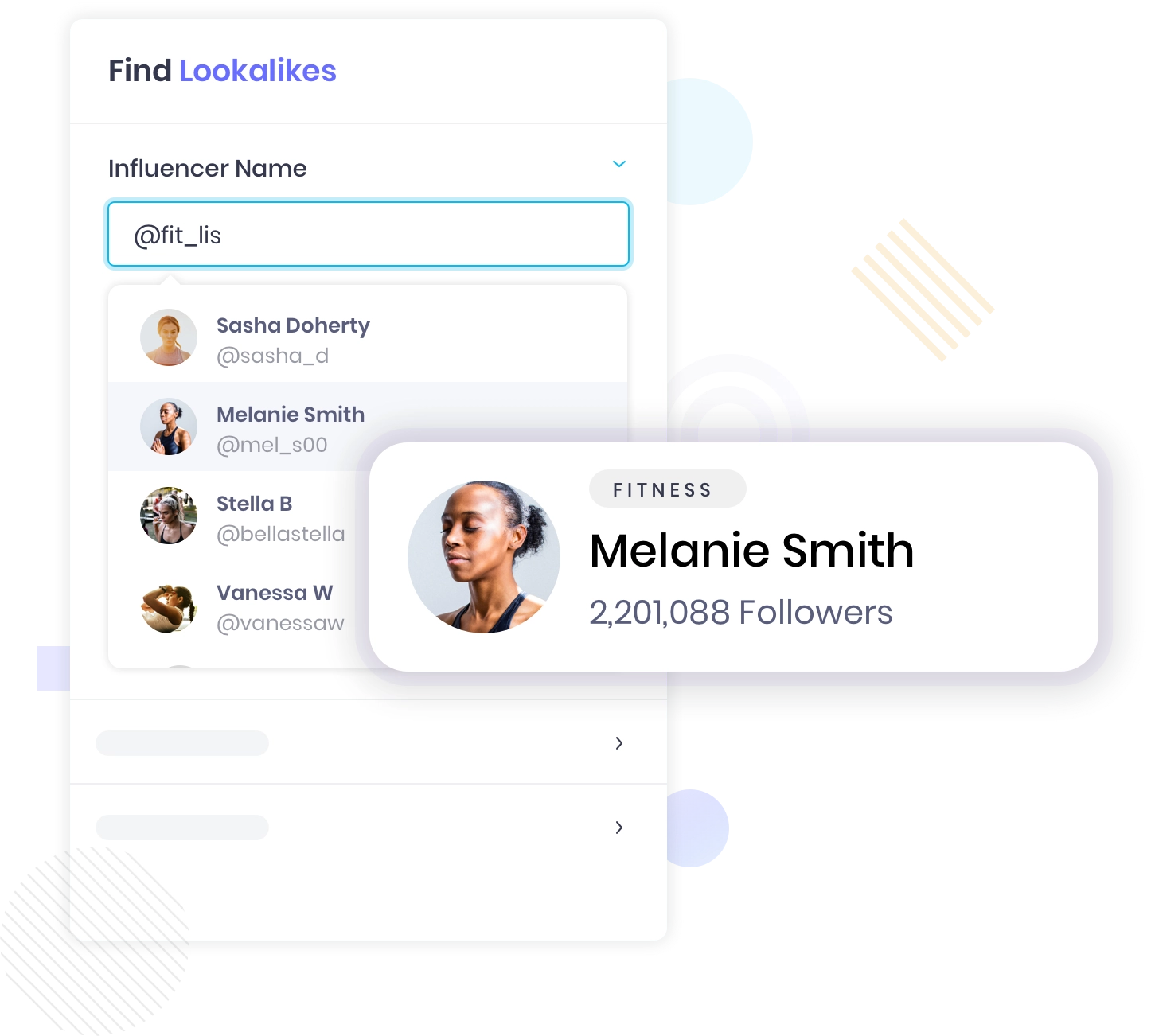
Analyze any influencer on TikTok or YouTube
Looking for more details on this influencer? Check out their top metrics
Nano Influencer
Micro Influencer
Macro Influencer
Mega/
Celebrity Influencer
1K-10K
10K-100K
100K-1M
1M+

5%
3.5%
2%
1%

3.5%
3%
2%
1.5%

2%
1.5%
1.25%
1%

1%
0.75%
0.5%
0.5%

18%
12%
8%
4%

At the risk of oversimplifying, most engagement rates take the number of post engagements (likes, shares, and comments) and divide that number by a creator’s follower count.
But many marketers closely examine social media algorithms to understand how a creator’s content reaches audiences. These insights cause marketers to view engagement in a few different variations.
For example, some analysts claim that Instagram does not automatically prioritize placing creator content in follower newsfeeds. Rather, these observers claim that content from friends and family is most likely to show up on newsfeeds. If this observation is true (and remains so in the face of frequent algorithmic changes), then engagement rates might need to be calculated in other ways.
Despite these hair-splitting controversies, an engagement rate generally expresses the same data quality. That is, there is an audience and then there is audience response. The volume of that response against the backdrop of all impressions from views, followers, etc. represents an engagement rate.
A creator’s engagement rate demonstrates that audiences weren’t content to merely view a piece of content. The creator’s content was compelling enough to merit a response, whether that response be a like, comment, or share.
When a creator produces consistent, positive responses from other social media users, their engagement rate climbs. And influencer marketers note that creators with high engagement rates very likely nurture audiences that view the creator’s opinion very highly.
For DTC brands, engagement is one of the strongest indicators of influencer ROI. High engagement metrics typically show brands that a particular creator has the skills and relationships to leverage on behalf of the products and services that they love.
Unfortunately, fake influencers exist. And with the growing popularity of influencer marketing, fake influencers exist in two forms.
The first – and most notorious – version of fake influencers are those that purchase followers and likes. These fake influencers will manufacture engagement to appear more valuable to brands. They may even go so far as to partner with individuals or agencies to manufacture post comments and shares.
Spotting this first category of fake influencers is simple if you take a closer look at their profile and post engagements. Typically, they have an inordinate amount of likes to comments and shares. Of the comments that do exist, the grammar is poor and the comment substance is shallow.
The second category of fake influencers are those that initially build a strong audience but lose their authenticity in an effort to make money with brands. These influencer audiences are usually real, but the influencer’s engagement rates begin to take a nosedive once followers weary of the inauthentic content.
Calculating engagement rates based on follower counts is the most common method among influencer marketers. See the formula below:
Post Engagements / Number of Followers
A creator’s followers represents the widest pool of social media users with a likelihood of engaging that creator’s posts. This calculation method tracks a creator’s rapport among his/her active audience.
Followers’ repeated and meaningful engagements on creator posts demonstrates that that creator has a strong connection with their followers. This approach is the best way to understand how easily creators like influencers consistently appeal to their followers.
In an influencer campaign, marketers may want to examine engagement rates for specific posts. Using this metric, brands can gauge how well a creator’s post performed compared to that creator’s other content or past campaign posts.
This approach is especially helpful when sponsoring creator Instagram Stories or in dark posting campaigns.
Additionally, measuring reach allows your brand and influencer team to tweak your use of messaging and hashtags to generate more views for each post. The greater your reach, the more opportunities there are for meaningful engagement.
In restricting engagement to likes, comments, and shares, you might miss opportunities to track different kinds of engagement. This begs the question – what exactly is engagement?
Engagement is a meaningful post interaction. On its own, a social media platform offers the three standard engagement types (likes, comments, and shares). TikTok offers challenges and duets. Followers can also direct message brands and creators.
But your influencer marketing program can offer more opportunities for users to engage. Analytics demonstrates many scenarios in which a follower refrains from hitting the like button, sharing, or commenting, but that follower will click a link to make a purchase or claim a discount. Without the proper tools, some brands may never realize these additional engagement opportunities.
Links within posts give audiences more ways to engage a creator post. Whether these links direct to a landing page, ecommerce store, or request for more information, tracking them can give you a better idea of how well your creator’s posts are performing.
The opportunity for ongoing user-generated content makes post comments significant. Often, audience members have questions or feedback regarding a brand or product showcased in a creator post.
Both the brand and the creator have the opportunity to engage those followers with helpful information. These comments can also initiate fruitful conversations that generate additional engagements from other social media users.
All to say, by paying close attention to post comments, your marketing team and creator may want to encourage ongoing discussion within an influencer post. This activity will continue putting the creator post back into follower newsfeeds and even attract outside audiences.
It’s common practice for creators on Instagram and YouTube to curate a post (or set of posts) and refer followers to an affiliate link in their profile. This approach is most common among brand ambassadors because they tend to nurture long-term relationships with their favorite brands.
By noticing when certain affiliate links convert, you can match the web traffic to a particular campaign and track those engagements for a more accurate influencer engagement rate.
Branded hashtags are yet another way to note engagements beyond the traditional like, comment, or share. Many followers and influencer peers will follow an influencer’s lead in promoting a branded or custom hashtag for your campaign or marketing event.
Most social media platforms allow you to search for hashtags and find out how often someone used your hashtag to promote your brand. These hashtag shares demonstrate quality engagement.
The quality of your creator vetting process can make or break your influencer marketing campaigns. Using our free engagement rate tool above, you can measure the quality of a creator’s relationship with their audience.
Strong relationships between creators and their followers increases the chances for more conversions during an influencer marketing campaign. By understanding how engagement rates work, you can also use this information to improve the quality of your influencer marketing campaigns over time.
You can use tools like GRIN’s Influencer Engagement Rate Calculator to measure it, or you can do it manually with this formula: Engagement Rate = (Total # of Post Engagements / # of Followers) x 100.
An engagement is any kind of interaction on a social media post, and engagement rate is the ratio of engagements to followers.
Average engagement measures the typical number of engagements a person or brand receives on their social media posts. An engagement can be a like, comment, share, or click. You can calculate the engagement rate with the following formula:
Engagement Rate = (Total # of Post Engagements / # of Followers) x 100
To get the average engagement rate, use this equation for several posts on a single account, and average the numbers together. You can also skip the math and use GRIN’s Influencer Engagement Rate Calculator.
The short answer: It depends.
To truly evaluate whether a creator’s engagement rate is good, you also need to look at how many followers they have. Nano and micro influencers with smaller followings should have higher engagement rates, as they have more time to develop stronger connections with their followers. On the other hand, macro and mega influencers have much larger followings and generally have lower engagement rates because they have less of a personal connection.
A good engagement percentage depends on how many followers a creator has. The fewer followers they have, the higher you want their engagement to be. Engagement rates starting at 3.5% are good, but for people with larger followings, these should be closer to 1.5% and above.
An influencer engagement rate measures how frequently people interact with an influencer’s post on social media.
Influencers use many different factors to determine their rates, including their follower count and average engagement rate, the time and resources it takes to produce their content, the demand for their services, and more.
There are a few different strategies you can use to increase your engagement rate:
You can calculate the engagement rate with the following formula:
Engagement Rate = (Total # of Post Engagements / # of Followers) x 100
For photo and video grid posts, you can determine engagement by adding the number of comments, shares to stories, and likes per post. Then divide by the number of followers, and then multiply that number by 100.
For stories, add all interactions (comments, people using interactive stickers, link taps, etc.), then divide by the number of followers and multiply by 100.
You can calculate the engagement rate for a TikTok post by adding the engagements (number of likes, comments, shares, etc.), and then dividing that number by the number of followers. Then multiply by 100.
The average engagement rate for U.S. influencer content on TikTok is 17.99%.
You can calculate the engagement rate of a Facebook post by adding together all interactions (likes, comments, shares, etc.), then dividing by the number of followers. After that, multiply the number by 100 to get the engagement rate.
The average engagement rate on a Facebook post is 0.07%, with status posts generating the most engagement and link posts earning the least.
You can calculate the engagement rate for a Twitch stream by adding the engagements (comments, cheers, etc.), and then dividing that number by the average concurrent viewership (the average # of people watching during one stream). Then multiply by 100.
As of 2022, no researchers have really taken a close look at engagement rates on Twitch, but they are studying other metrics. For example, Twitch gets about 140 million visitors monthly, and they watch about 1.86 billion hours each month.
You can calculate the engagement rate for a tweet by adding the engagements (replies, retweets, likes, etc.), and then dividing that number by the number of followers. Then multiply by 100.
The average engagement rate for brand posts on Twitter is 0.04%.
You can calculate the engagement rate for a YouTube video by adding the engagements (likes, comments, shares, downloads, etc.), and then dividing that number by the video views. Then multiply by 100.
The average engagement rate for an influencer video on YouTube is 0.63%.
You can calculate the engagement rate for a LinkedIn post by adding the engagements (likes, comments, shares, etc.), and then dividing that number by the number of followers. Then multiply by 100.
LinkedIn posts have an average engagement rate of 0.054%.
A high engagement rate typically means that a creator posts compelling content and interacts with their followers a lot. However, an exceptionally high engagement rate—one that looks almost too good to be true—could indicate that a lot of bots are following the account and manufacturing fake engagements.






Whether you are just getting started with influencer marketing or already have your program in place, this guide gives you the tools to get the return on investment your C-level will love.
In the meantime, use our Web Extension to analyze profiles in those platforms.
In the meantime, try using our Web Extension to analyze profiles.